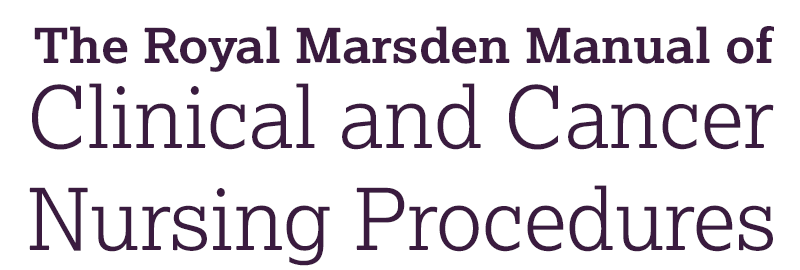Chapter 16: Perioperative care
Skip chapter table of contents and go to main content
Source: Adapted from Escobar and Knight ([59]), Mizell ([126]), NICE ([142]), Sørensen et al. ([196]).
Surgical wounds
Definition
Surgical wounds are incisions through the skin that are made by a cutting instrument (e.g. scalpel). This allows a surgeon to gain access to the deeper tissues or organs. Surgical incisions are usually clean and cause minimal tissue loss and disruption. They are made in a sterile environment, where many variables can be controlled, such as bacteria, size, location and the nature of the wound itself (Toon et al. [204]).
A wound results in tissue damage, which stimulates a co‐ordinated physiological response to provide haemostasis and initiate the processes of inflammation. A surgical wound is classified as an ‘acute wound’, which is a controlled form of trauma (Singh et al. [193]).
Related theory
Surgical wounds are usually closed fully at the end of the procedure. This is known as ‘primary closure’ and is done using one of four devices, depending on the type of surgery and the surgeon's preference. They are:
- sutures (absorbable and non‐absorbable)
- adhesive skin closure strips (e.g. Steri‐Strips)
- tissue adhesive
- staples.
Non‐absorbable sutures, Steri‐Strips and staples need to be removed but only on the advice of the surgical team, usually 7–10 days post‐operatively.
Dressings for surgical wounds
The location of the wound and the method of wound closure usually determine whether the wound is dressed or not. In a closed surgical wound (i.e. one closed by sutures or clips), the main functions of a wound dressing are to:
- promote healing by providing a moist environment without causing maceration (softening and deterioration) of the surrounding skin
- protect the wound from potentially harmful agents (e.g. bacterial contamination) or injury
- allow appropriate assessment of the wound post‐operatively
- absorb exudates (e.g. blood or haemoserous fluids)
- ease discomfort (preventing the wound rubbing on clothing) (NICE [150]).
NICE ([142]) describes three categories of wound dressing (Figure 16.40) that are used post‐operatively:
- passive: designed solely to cover the wound, neither promoting nor intentionally hindering the wound‐healing process (e.g. ‘gauze‐like’ materials)
- interactive: designed to promote the wound‐healing process through the creation and maintenance of a warm, moist environment underneath the chosen dressing (e.g. alginates, foams, hydrocolloids and semi‐permeable film)
- active: designed to manipulate or alter the wound‐healing environment to either re‐stimulate or further promote the healing process (e.g. collagen and negative pressure therapy) (see Chapter c18: Wound management).
Current guidance states that surgical incisions should be covered with an appropriate interactive dressing at the end of an operation (NICE [142]). However, a systematic review published in 2011 that evaluated the clinical effectiveness of wound dressings for preventing surgical site infection concluded that there is no evidence to suggest that applying a wound dressing to a surgical wound healing by primary intention reduces the risk of surgical site infection (Dumville et al. [54]).
When dressings are applied in theatre, it is recommended that they are not removed unless exudate, commonly termed ‘strike‐through’, is evident or clinical signs of local or systemic infection (e.g. malodour or fever) occur. Unless contraindicated, dressings changes required within 48 hours of surgery should be undertaken using aseptic non‐touch technique and sterile normal saline (see Chapter c04: Infection prevention and control). While some dressings allow early bathing or showering of the rest of the patient after 48 hours, this should be confirmed with the surgeon performing the procedure (NICE [142]).
Studies have demonstrated that it is unnecessary to dress surgical wounds after 72 hours as a surgical wound that has good apposition is sealed against pathogenic invasion by epithelialization in approximately 48–72 hours (Dumville et al. [54], Toon et al. [204]); however, the application of wound dressings and their removal and subsequent renewal will depend upon local trust protocols. Careful assessment of the wound and the peri‐wound tissues is vital to monitor wound healing and to aid dressing selection; this should be evaluated at each dressing change (Vowden and Vowden [214]). If a dressing is required, it should be changed using aseptic non‐touch technique, to prevent micro‐organisms being introduced into the wound (NICE [150]).
The choice of dressing will depend on which qualities are required (i.e. absorptive or supportive) and should be made according to surgical recommendation (Dumville et al. [54]). Gauze‐based dressings should not be used to dress surgical wounds as these can completely adhere to the wound and become part of the healing tissue, causing excessive pain and wound damage (Vermeulen et al. [211]).
Patient education and psychological support will be required prior to exposing a wound as it may cause patient distress. On discharge, the patient should be referred to a community nurse and/or be educated about how to care for the surgical wound. Verbal and written information should be given to the patient; it should include the need to observe for signs of infection and swelling or seroma formation, and information on how to seek support and advice if such an event arises.
Complications
Surgical wound complications are important causes of early and late post‐operative morbidity (Mizell [126]). Surgical wounds in normal, healthy individuals heal through an orderly sequence of physiological events that include inflammation, epithelialization, fibroplasia and maturation. Failure of wound healing following surgery can lead to various complications, including dehiscence, surgical site infection, seroma and haematoma.
Table 16.14 Surgical wound complications: prevention and resolution
| The surgical team must be contacted in the event of any of the following problems occurring. | |||
|---|---|---|---|
| Problem | Cause | Prevention | Action |
| Dehiscence: partial or total disruption of any or all layers of the surgical wound. |
Systemic factors such as diabetes mellitus, cancer, immunosuppression.
Local factors:
|
Reduce risk factors (see the ‘Cause’ column) via comprehensive pre‐assessment.
Ensure adequate closure of the surgical wound intraoperatively. |
Action is dependent upon level of dehiscence, which may consist of any of the following:
Note: if dehiscence is suspected then a member of the surgical team should be contacted immediately for guidance.
Minor dehiscence
Local care for a small wound should be given according to local trust guidelines. Wound manager bags are occasionally indicated to drain the excessive exudate from a partially dehisced wound, particularly if skin integrity is compromised.
Partial (deep) or full dehiscence
In this event, a member of the surgical team should be contacted immediately for guidance. Management steps appropriate to the cause should be undertaken. |
| Surgical site infection (SSI): when pathogenic organisms multiply in a wound, giving rise to local and systemic signs and symptoms. SSI can occur at the incision site or in subcutaneous dead space. Symptoms include localized erythema, purulent exudates, tenderness and wound odour at the incision site. In more serious cases, systemic signs of infection (including raised temperature and raised white cell count) may be present. Infection in the surgical wound may prevent healing taking place so that the wound edges separate or it may cause an abscess to form in the deeper tissues. |
Systemic factors such as diabetes mellitus, cancer or immunosuppression.
Local factors:
Obesity, which causes increased subcutaneous dead space, rendering the patient more susceptible to infection.
Drains and sutures.
Poor hand hygiene contaminating the surgical site. |
Reduce risk factors (see the ‘Cause’ column) via comprehensive pre‐assessment.
Ensure adequate closure of the surgical wound intraoperatively.
Ensure optimal wound care is provided. |
Some signs of SSI (including erythema and tenderness) are also seen in the normal post‐operative inflammatory response, lasting up to 48 hours. Persistent inflammation beyond this period, the presence of pus or purulent discharge, or pyrexia may indicate infection. Note: if infection is suspected then a member of the surgical team should be contacted immediately for guidance.
A swab, pus sample and blood cultures (if systemic signs of infection, e.g. pyrexia, are present) should be taken to identify the causative micro‐organism and appropriate treatment commenced to eradicate it. Antibiotics will usually only be given if adjacent tissue is inflamed or there are systemic signs of infection. In more serious cases, infected wounds may need to be opened and explored or debrided. |
| Haematoma: collection of blood. The blood seeps from blood vessels that are cut during the operation to remove tissue. |
Inadequate haemostasis.
Use of coagulants.
Obesity, which causes increased subcutaneous dead space, rendering the patient more susceptible to haematoma formation. |
Ensure adequate haemostasis.
Reduce risk factors (see the ‘Cause’ column) via comprehensive pre‐assessment. |
Action is dependent upon manifestation. Haematomas can be asymptomatic or manifest as swelling with pain. They can cause the incision to separate and become predisposed to wound infection, since bacteria can gain access to deeper layers and multiply uninhibited in the stagnant blood.
Small haematomas
These can be managed expectantly and may resolve with no intervention as, once the small vessels heal, no further blood collects and the haematoma will gradually be absorbed by the body.
Large haematomas
These may require drainage under sterile conditions by needle aspiration. This will be undertaken by a member of the surgical team. |
| Seroma: collection of serous fluid. The fluid seeps from small blood and lymph vessels that are cut during the operation to remove the tissue or lymph nodes. Most frequently seen under split‐thickness skin grafts and in areas with large dead spaces (e.g. axilla, groin, neck or pelvis). |
Difficult surgery.
Obesity, which causes increased subcutaneous dead space, rendering the patient more susceptible to seroma formation. | Reduce risk factors (see the ‘Cause’ column) via comprehensive pre‐assessment. |
Action is dependent upon manifestation. Seromas can be asymptomatic or manifest as swelling with pain. Seromas can cause the incision to separate and become predisposed to wound infection since bacteria can gain access to deeper layers and multiply uninhibited in the stagnant fluid.
Small seromas
These can be managed expectantly and may resolve with no intervention as, once the small vessels heal, no further fluid collects and the seroma will gradually be absorbed by the body, usually over 1 month.
Large seromas
These may require drainage under sterile conditions by needle aspiration. This will be undertaken by a member of the surgical team. |
| Allergic reaction: local rash, redness and/or itching at the site of the surgical wound. | Allergic reaction to surgical dressing or topical ointment applied intraoperatively. | Ensure identification of allergies via comprehensive pre‐assessment. | Remove the allergen (dressing or ointment). If the allergic reaction is severe, give antihistamine. Document the allergy according to local policy, e.g. update the patient's records to alert other healthcare professionals. Inform the patient. |






